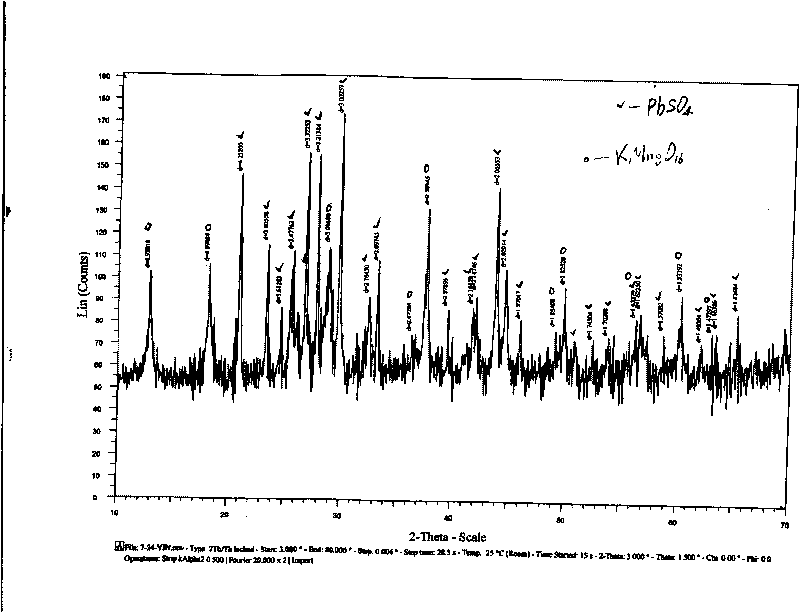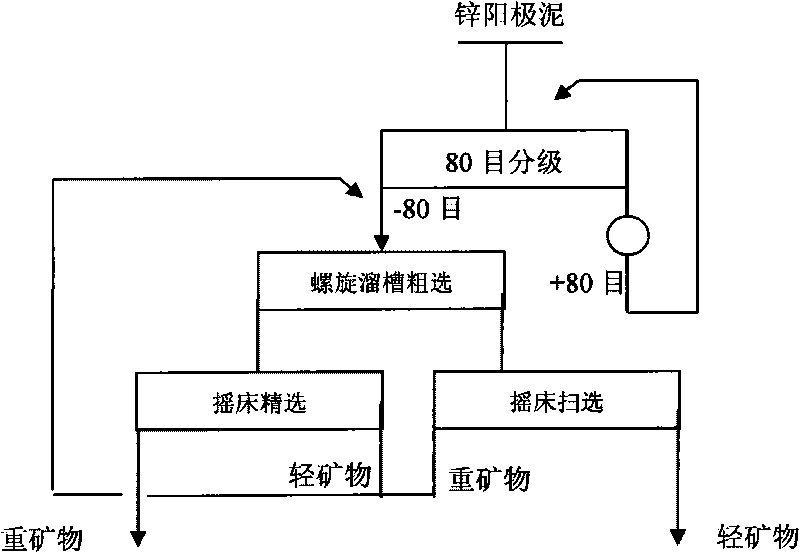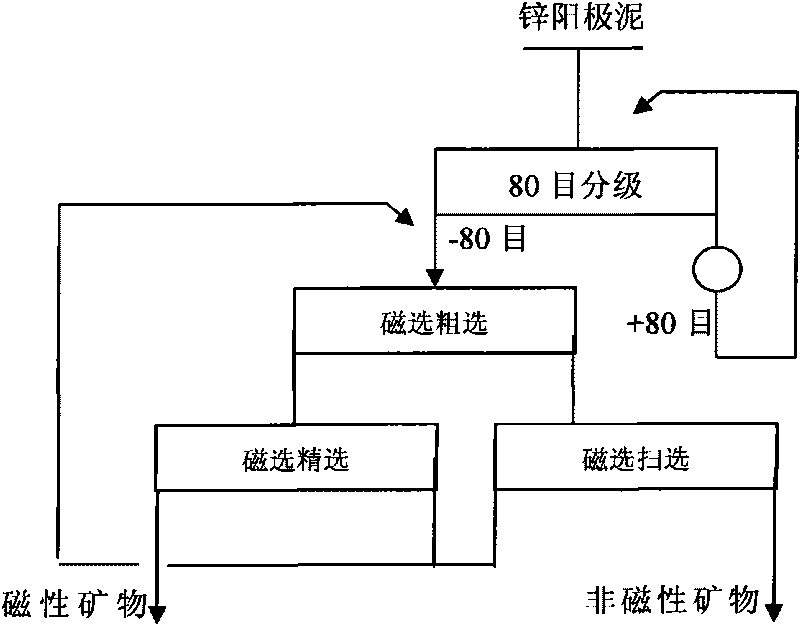Method for separating lead and silver from manganese in anode sludge
A technology for anode slime and lead separation, applied in magnetic separation, solid separation, wet separation, etc., can solve problems such as no discovery, and achieve the effect of low production cost and simple process
- Summary
- Abstract
- Description
- Claims
- Application Information
AI Technical Summary
Problems solved by technology
Method used
Image
Examples
example 1
[0022] Example 1: Chemical analysis of an electrolytic zinc anode slime (see Table 1) shows that it contains 32.1% of Mn, 19.8% of Pb, and about 1223g / t of silver. XRD diffraction analysis results (see figure 1 ) shows that the lead in the anode slime is mainly PbSO 4 Existence, manganese mainly as KMn 8 o 16 exist. After the anode slime is countercurrently washed with water, the pH of the pulp changes from about 1 to about 5, and the solid-liquid separation obtains the filter residue and about three times the weight of the residue washing filtrate. The filter residue contains about 36% of manganese, about 21% of lead, and 1350g of silver. / t or so, the filtrate contains H 2 SO 4 28g / l 4 , containing 5.6g / l zinc and 2.1g / l manganese.
[0023] Table 1 Chemical analysis results of a certain zinc anode slime
[0024] project
mn
Pb
Ag(g / t)
Zn(water)
Mn(water)
h 2 o
h 2 SO 4 (water)
content(%)
32.07
19.76
...
PUM
| Property | Measurement | Unit |
|---|---|---|
| Magnetic field strength | aaaaa | aaaaa |
Abstract
Description
Claims
Application Information
 Login to View More
Login to View More - Generate Ideas
- Intellectual Property
- Life Sciences
- Materials
- Tech Scout
- Unparalleled Data Quality
- Higher Quality Content
- 60% Fewer Hallucinations
Browse by: Latest US Patents, China's latest patents, Technical Efficacy Thesaurus, Application Domain, Technology Topic, Popular Technical Reports.
© 2025 PatSnap. All rights reserved.Legal|Privacy policy|Modern Slavery Act Transparency Statement|Sitemap|About US| Contact US: help@patsnap.com



